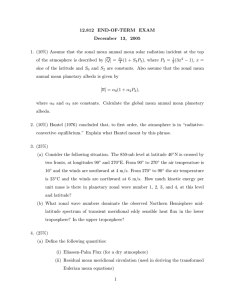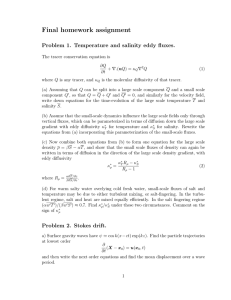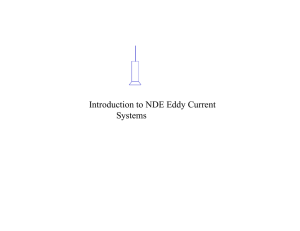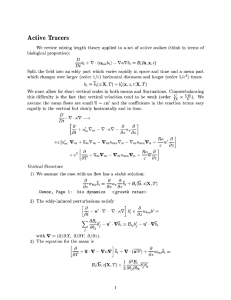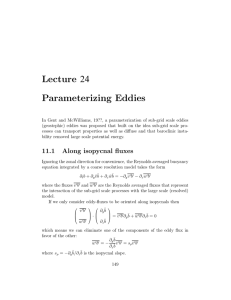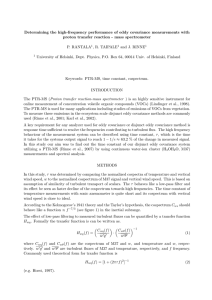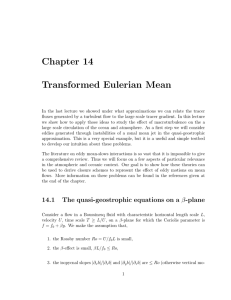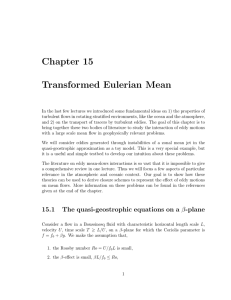12.812 MID-TERM EXAM October 25, 2004
advertisement
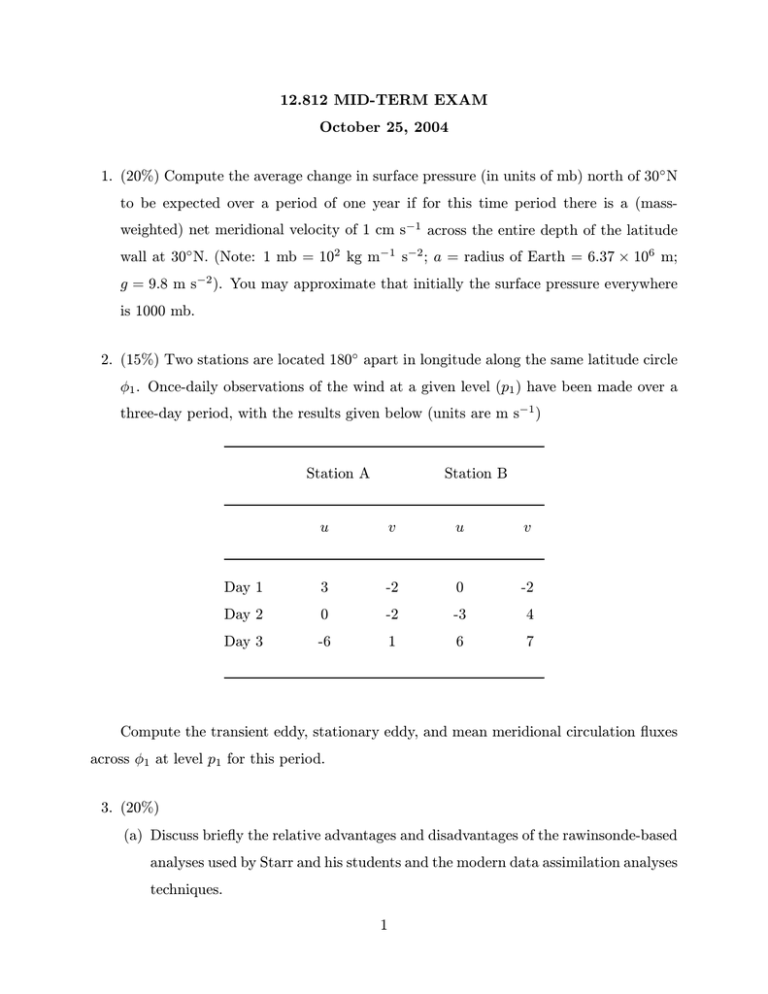
12.812 MID-TERM EXAM October 25, 2004 1. (20%) Compute the average change in surface pressure (in units of mb) north of 30◦ N to be expected over a period of one year if for this time period there is a (mass weighted) net meridional velocity of 1 cm s−1 across the entire depth of the latitude wall at 30◦ N. (Note: 1 mb = 102 kg m−1 s−2 ; a = radius of Earth = 6.37 × 106 m; g = 9.8 m s−2 ). You may approximate that initially the surface pressure everywhere is 1000 mb. 2. (15%) Two stations are located 180◦ apart in longitude along the same latitude circle φ1 . Once-daily observations of the wind at a given level (p1 ) have been made over a three-day period, with the results given below (units are m s−1 ) Station A Station B u v u v Day 1 3 -2 0 -2 Day 2 0 -2 -3 4 Day 3 -6 1 6 7 Compute the transient eddy, stationary eddy, and mean meridional circulation fluxes across φ1 at level p1 for this period. 3. (20%) (a) Discuss briefly the relative advantages and disadvantages of the rawinsonde-based analyses used by Starr and his students and the modern data assimilation analyses techniques. 1 4. (20%) Figure 1 illustrates fields related to the flow in the mean meridional plane above the northern hemisphere of a hypothetical planet that rotates in the same sense as the Earth. The units for each quantity are arbitrary; positive winds are eastward and positive momentum flux values are northward and upward. The field of vertical eddy fluxes of momentum includes effects associated with molecular fristion stresses. (a) Do the mean circulation, horizontal eddy, and vertical eddy momentum transports tend to increase or decrease the kinetic energy in this atmosphere? Give your reasoning. (b) Suppose that the mountains on this planet do not extend to pressures lower than 750 mb. Suppose, too, that pressures are higher on the east side of the average mountain range. Does the presence of these mountains tend to increase or decrease the zonal kinetic energy in this atmosphere? Give your reasoning. 5. (10%) (a) On what time scale does the global atmospheric angular momentum (AAM) contain the most variance? (b) If the atmosphere were to come to a stop relative to the solid Earth (i.e., if the global relative AAM were to equal zero), by how much would the length of day approximately change? (1) It would increase by 2.5 milliseconds (2) It would decrease by 2.5 milliseconds (3) It would decrease by 0.25 milliseconds (4) It would increase by 0.25 milliseconds 6. (15%) Describe the main elements of the atmosphere’s annual mean hydrological cycle. 3
